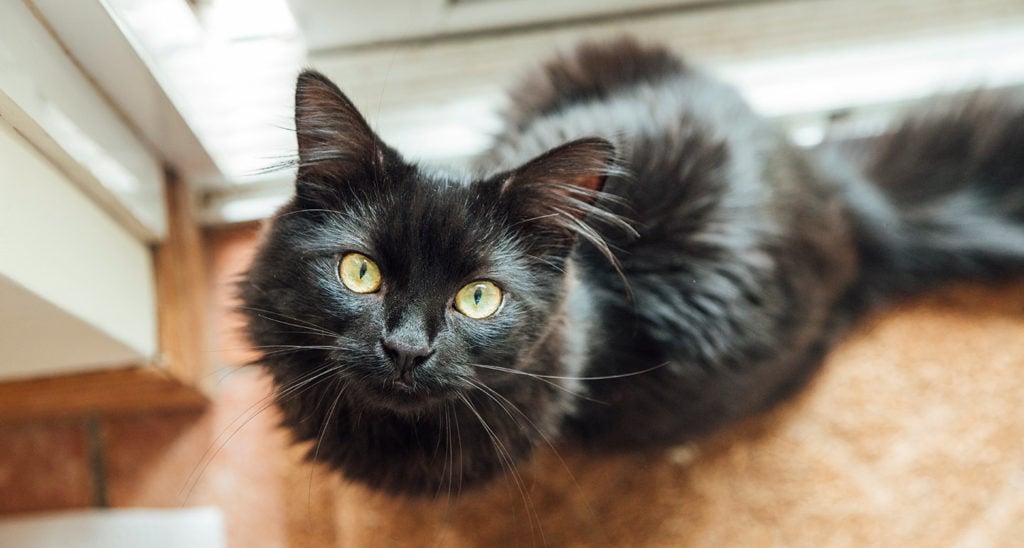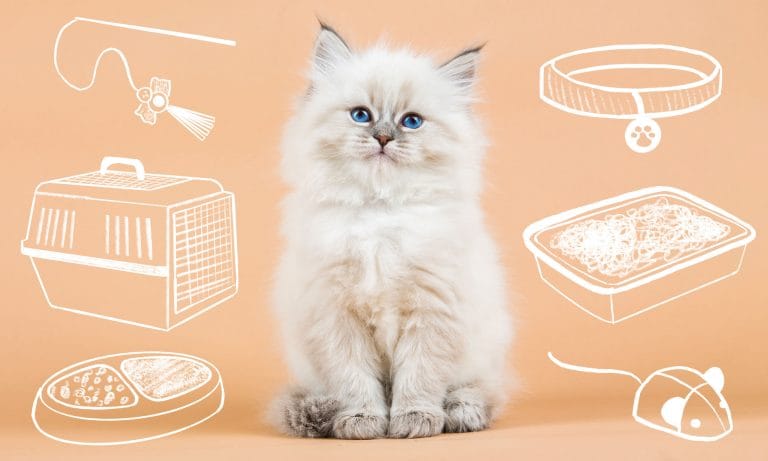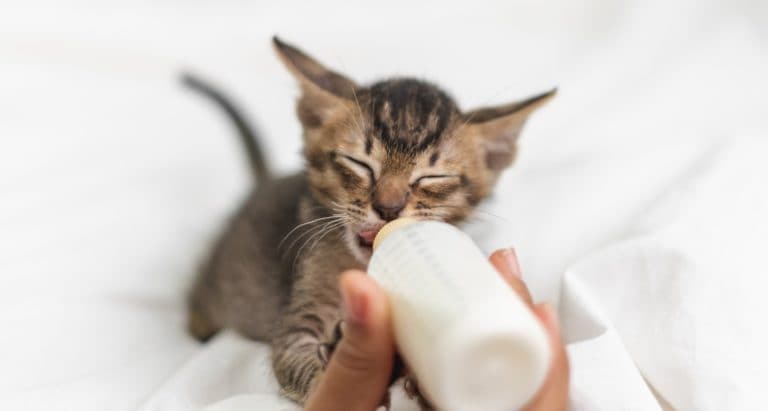If you’re planning to become a new cat owner (or, as we like to think of it here at Chewy, cat parent), you’re probably looking forward to the joy of having a new creature in your house. But if you’re a first-time cat owner, be prepared for a few surprises. Cats can be prone to what new owners might describe as “weird behavior” (think: leaping up on counters, running wild in the dead of the night or playing in boxes). But rest assured, these behaviors are typical.
“When you think about getting a cat, you’re kind of living with a wild animal,” says Stephanie Borns-Weil, a veterinarian and a behaviorist at the Cummings School of Veterinary Medicine at Tufts University. “The cat will be happiest if you can provide an environment with your cat where it gets to do what cats do.”
Here are eight behaviors new cat owners should expect and ways you can cope with them to make life easier for you and your cat:
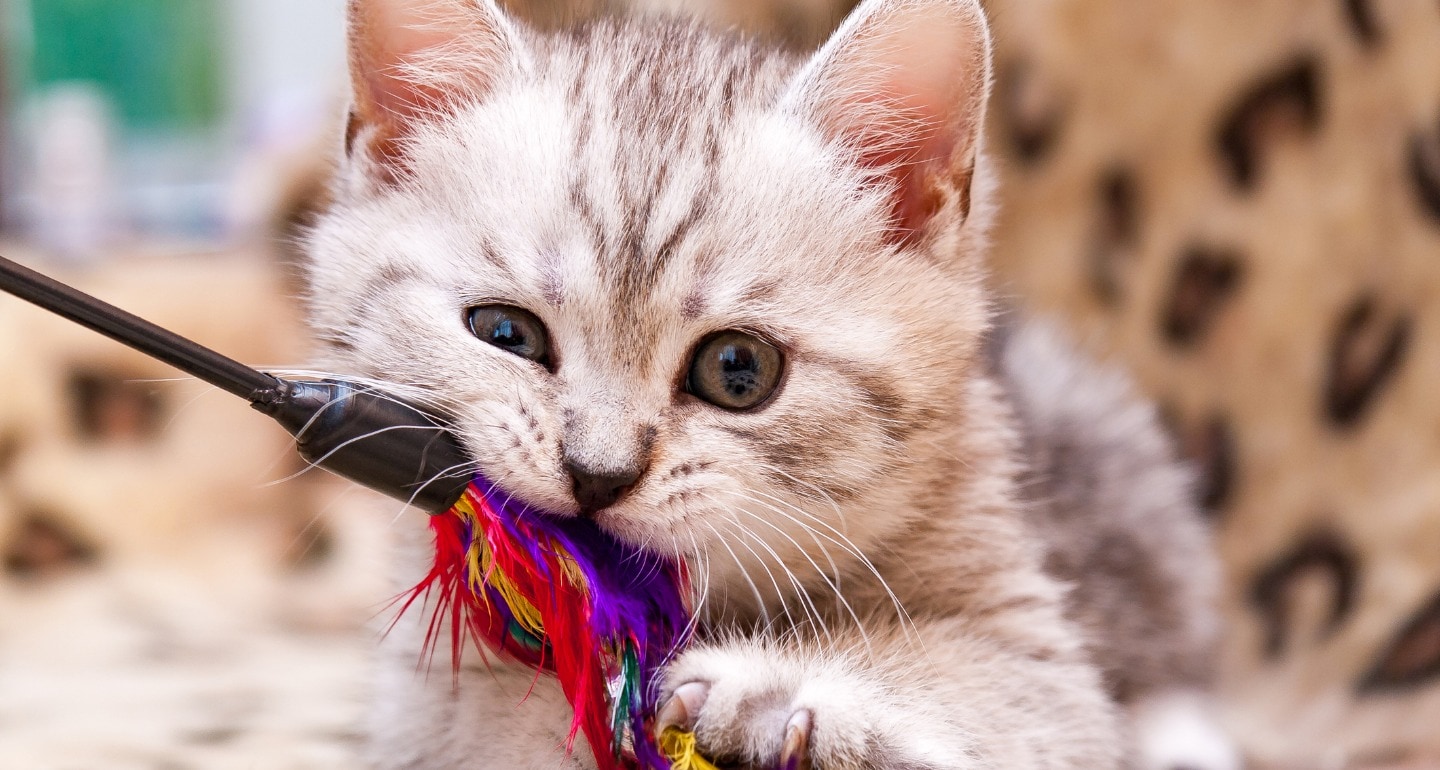
iStock.com/SunRay BRI Cattery RU
1
Lots of Playtime
If you think cats are low maintenance, easy pets, think again.
First-time cat owners have to be ready to play with their cats, says Borns-Weil. “Kittens are very playful. They have a high need for interaction and stimulation and predatory play.”
She recommends that new cat owners provide a stimulating environment for your cat by giving them access to puzzle toys and plenty of interaction with you.
“They’re at this stage in life where play is really important to them or their development. You want to provide tons of opportunity for that predatory play,” says Borns-Weil.
The only thing she doesn’t advise? Hand play. She’s spotted glove toys with pom-poms attached on the fingers on store shelves and recommends avoiding them. Likewise, you’ll want to try to put a stop to any “inappropriate” behavior.
“You want to entirely discourage any kind of inappropriate play early on,” says Borns-Weil. “If they leap out at you when you’re walking by you don’t want to interact. You want to avoid and prevent.”
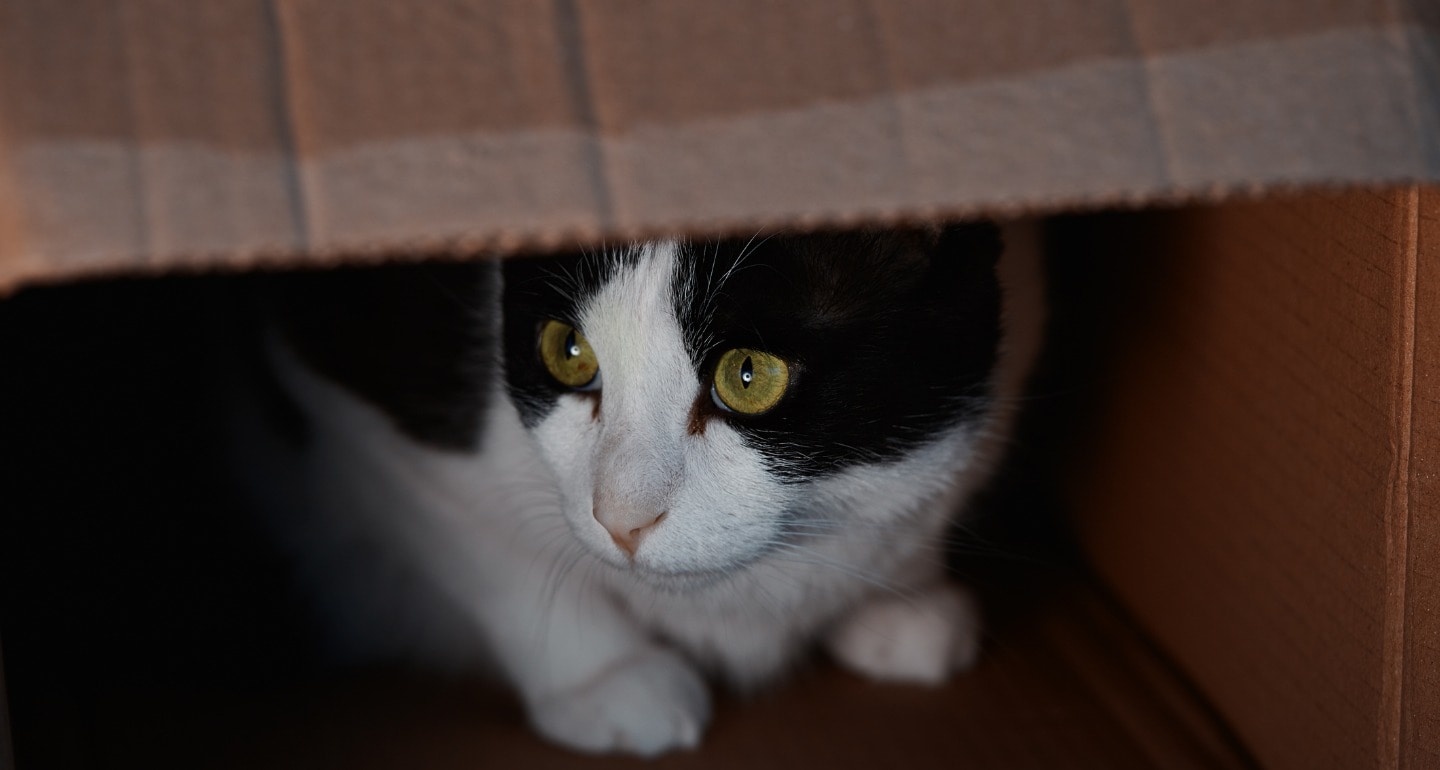
iStock.com/delihayat
2
Nighttime Activity
If you're a first-time cat owner, expect your cat to go a little haywire in the middle of night.
“[Cats] will start racing around the house for no apparent reason whatsoever,” says Jenn Corsun, manager of Cat World at Best Friends Animal Society in Kanab, Utah. Corsun is responsible for about 550 cats at the shelter and currently has eight cats at home. Corsun calls these nighttime antics the “zoomies.”
Why do they do this? “The cat is naturally a nocturnal creature,” says Corsun.
If you’re a new cat owner searching for a way to try to stop late-night cat parties, try to play with your cat during the day. It will help them burn off energy and hopefully keep them asleep throughout the night.
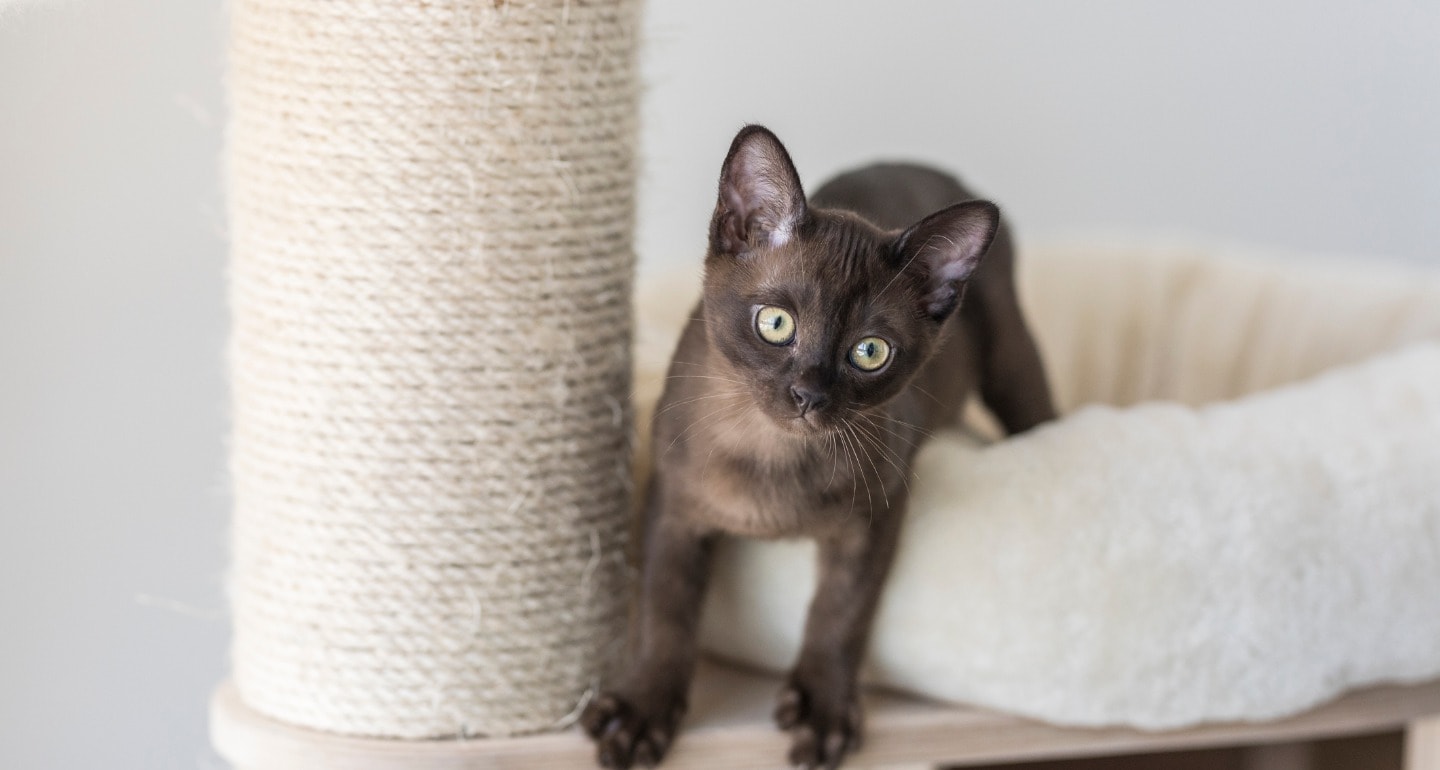
iStock.com/Angela Kotsell
3
Visits From Above
Most cats are climbers. Some can even leap high on your counters or on your book shelves.
“They love to be on top of things and up high surveying down, where they feel most safe and comfortable,” says Borns-Weil. “They’re not trying to be naughty. That’s just where they’re comfortable.”
First-time cat owners can try buying a cat condo or tree so your cat can sit up high and watch the environment. Borns-Weil says she once laid a mat down on top of her fridge so her cat had a place to rest. Corsun also recommends new cat owners ensure their bookshelves are secured to the wall so a cat won’t injure themselves or knock over a shelf.
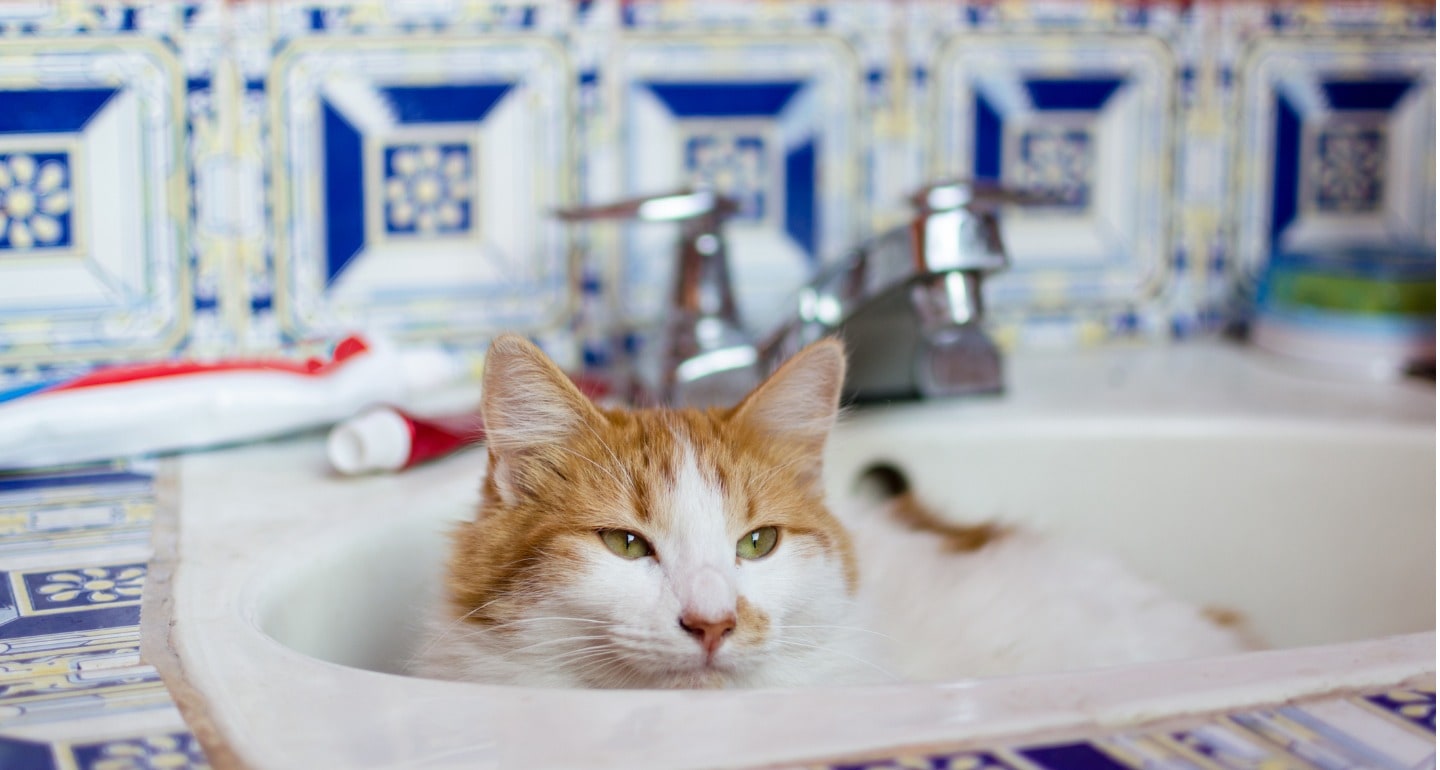
iStock.com/Saska_Cvet
4
A New Friend in Your Sink
Be warned, first-time cat owners: You might want to close the door when you’re showering. Otherwise, you cat might try to sneak in with you.
“They love running water [but] don’t necessarily like to be in the water,” says Corsun “They’ll sit in the sink for no reason.”
If you’d prefer your cat not do this, you can cover the sinks when you’re not at home or you can try training them using positive reinforcement.
“Take them down from the sink, put them down on the floor, give them a treat or extra attention. But you need to do that every single time,” says Corsun.
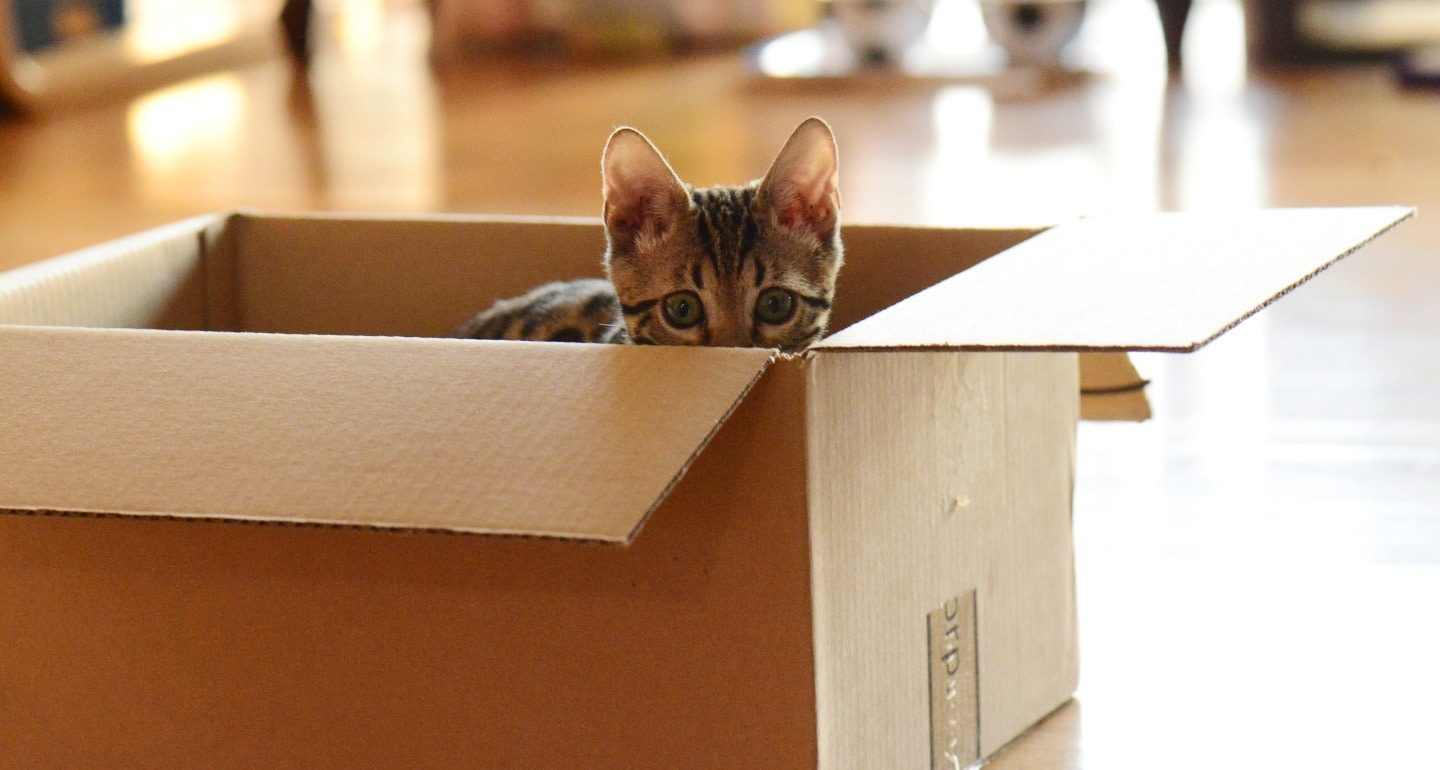
iStock.com/ufokim
5
A Hidden Figure
Many cats love playing or hiding inside boxes. Some will climb into cabinets or squeeze in very tiny spaces. And, according to Borns-Weil, it’s due to their natural predatory behavior.
“They like to explore,” says Borns-Weil. “They’ll hang out outside a hole or be ready to pounce. They’re intrigued by the idea of not being down on the floor and vulnerable.”
She says it’s key that new cat owners don’t accidentally end up encouraging this behavior if it’s something they’d rather avoid.
“If a cat does anything that you think is really cute, and you give them positive feedback, then you’ve actually trained them to go in the bag,” she says. “Provide natural places where they can hide. If you don’t want them to do something, just don’t make it available to them. But if it’s a biological or genetic need, then you want to provide them with opportunities.”
She suggests first-time cat owners give their cat boxes or bags to hide in. It’s easy to rotate those items and you won’t have to pay for them.

iStock.com/JosephJacobs
6
Surprise Attacks
“No matter how many expensive toys that you buy them, [cats] would rather play with your shoe laces, the box that the toy came in,” says Corsun. “They will chase bugs and mice. They won’t necessarily play with the things that you want them to play with. They’re going to make their own fun.”
Corsun recommends new cat owners buy their cat a scratching post to give them a toy. Consider buying a laser pointer, chasing toys, fishing toys or cat toys with feathers on the ends. Anything you and your cat will like to use to exercise their natural need to hunt, as long as it’s not encouraging bad behavior.
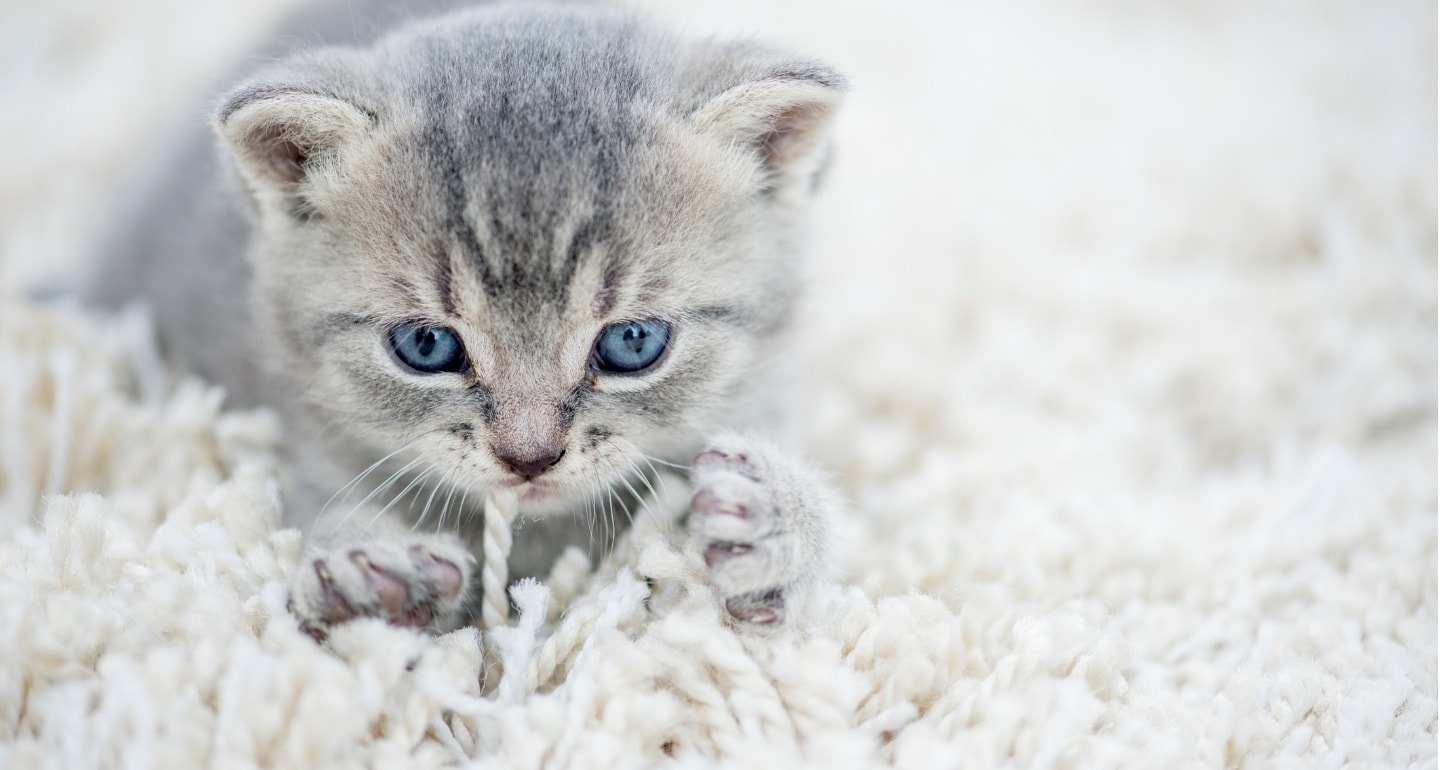
iStock.com/FatCamera
7
The Need to Knead
Kneading refers to when cats press their paws and claws into you in a somewhat affectionate way. It’s usually referred kneading, or “making muffins,” since it resembles this.
“That’s what they do when they nurse,” says Borns-Weil. “It’s not that they’re trying to nurse [you] when they do it. It’s just that they’re having that kind of happy, positive bonding experience.”
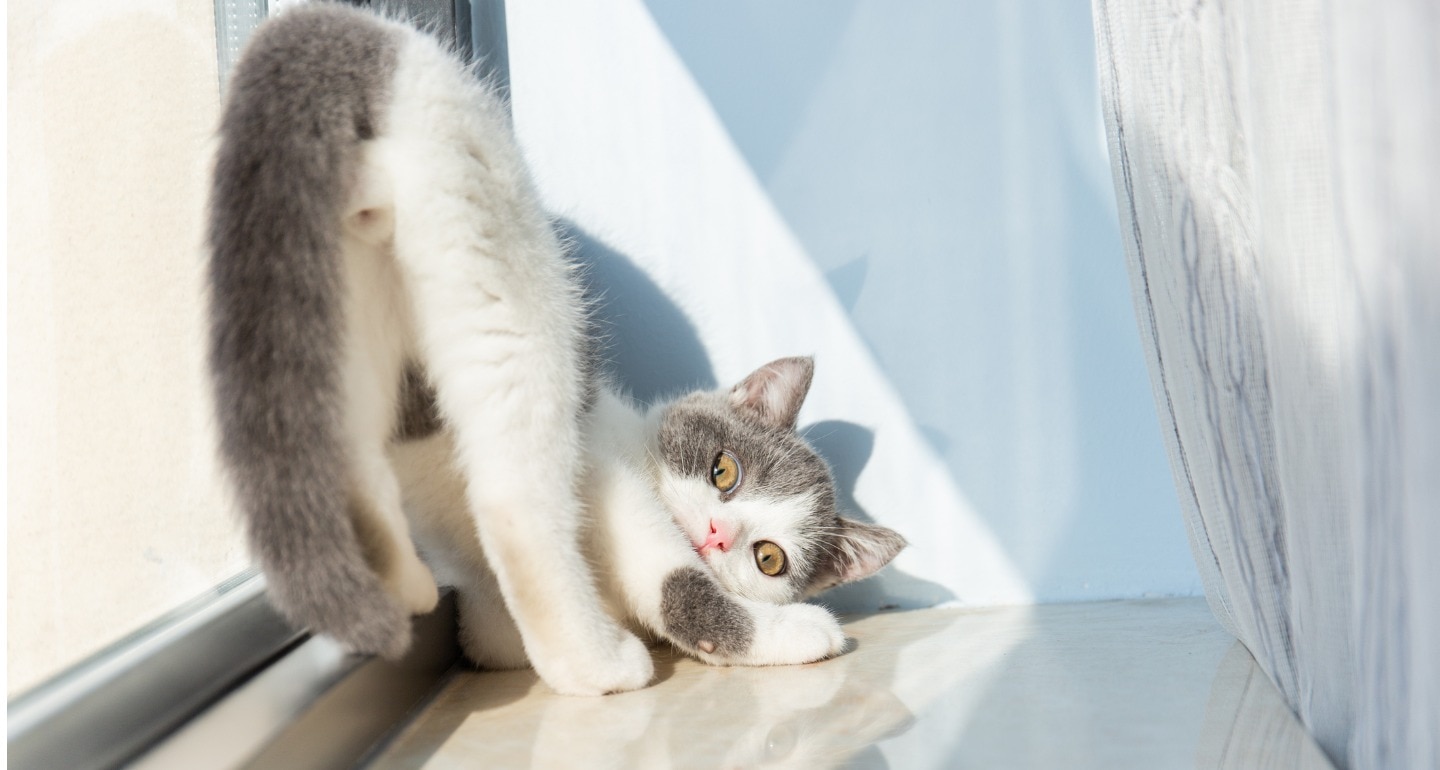
iStock.com/undefined undefined
8
Making a Mark
Marking is usually something only associated with dogs, but cats also do this.
“Scent is very important to them,” says Corsun. “Cats will rub up on everything. Mostly with their face, sometimes with their sides [and] rear. Depositing scent, marking things that are there, including you.”
Cats also urine mark just like dogs do. Borns-Weil says intact males are more likely to engage in this behavior, but neutered cats do it, too.
Although you might not think of if that way, scratching is also a marking behavior. And purchasing a scratching post might not be enough to deter your cat from clawing your sofa, either.
“If you buy your cat a scratching post and they still mark the couch, it’s probably that the couch is more significant, in a more prominent place in the house,” says Borns-Weil. “For a scratching post to work, it should be one that shreds up.”
Borns-Weil says the scratching post should be tall enough so the cat can reach it when they are standing on their back legs.
Share:
